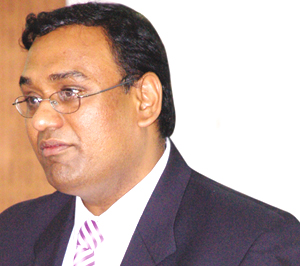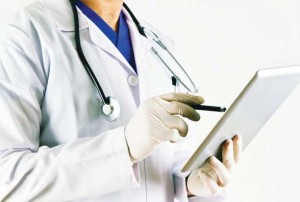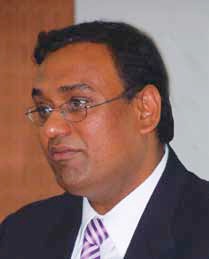

The rigmarole ofcarrying pile of medicalreports is no longerbeing practiced inmodern healthcare,welcome to the worldof Electronic HealthRecords (EHR)
By Sharmila Das, ENN

During our visits to doctorsclinic or hospitals we oftencome across people waitingwith their medical reports.While this practice has been in placestill now, many hospitals and privateclinics have started getting benefitsof using EHR. An EHR is an IT enabledsolution that keeps ones medicalrecords saved in computer for furtherreference. It is a digital and portableversion of the current paper file systemthat would be accessible to alldoctors. That means that wheneveryou see a new physician, you couldstop filling out endless paper forms,as your doctor could access everythingabout you on the computer.
Sumanth Tarigopula, VP, AppsGlobal Delivery India, EnterpriseServices, HP shares, An EHR is systematiccollection of electronic healthinformation about individual patientsor populations. Patients treatmentoften happen at multiple locationslike initial investigation with a primarycare provider, lab tests with alab provider and pharmacy intakewith the pharma providers. Due tothis distributed care the care recordsare stored in multiple systems or aspaper records resulting in limited accessto the records when a providerhas to review past records to providetreatment.
A recent study says an accountabilitytool embedded in an EHR systemcould help reduce unnecessaryCT scans among emergency departmentpatients with abdominal pain.
Arup Mukherjee, COO, BinarySpectrum says, Although EMR hastangible positive outcomes, the adoptionrate of EMR/EHR/PHR in Indiahas been low so far. The marketcomprises handful of hospitals usingEMR but the usage of EMR is mainlylimited to corporate hospitals in thevarious metro cities of India. Severallarge hospitals in India have announcedextensive expansion plansduring 012-2015 in response to theincreasing healthcare needs of thecountrys growing population. Researchfirm projects that the hospitalservices market, which representsone of the most important segmentsof the Indian healthcare industry, isexpected to grow at a compoundedannual growth rate of 15 percent forthe period of 2010-2014 and thus beingworth USD 81.2 billion by 2015.Further, the healthcare segment offers an attractive growth opportunityfor the information technology (IT)and business processing outsourcing(BPO) industry.
An EHR is systematic collection ofelectronic health information aboutindividual patients or populations. Patientstreatment often happen at multiplelocations like initial investigation with aprimary care provider, lab tests with a labprovider and pharmacy intake with thepharma providers


Sumanth Tarigopula, VP, Apps Global Delivery India, EnterpriseServices, HP
Bhavesh Thakker, VP, Chowgule Mediconsult Pvt Ltd says, The marketfor EHR which covers both EMR andPHR – may be relatively smaller as comparedto the developed markets, but thegrowth rate demonstrated in the lastfew years is very encouraging. Evenmore encouraging is the positive outlookshown by most healthcare providers onthe need to integrate these as standardindustry best practice criteria.
Dr Suresh Munuswamy, Faculty forHealth Informatics, Senior Lecturer,Indian Institute of Public Health, Hyderabad,Public Health Foundation ofIndia says, The state or perhaps thecentre has to take the lead, in developinga central EHR back bone and enableor incentivise private healthcarefacilities to set up infrastructure tolink up to the central EHR. Facilitieswhich are receiving state insurancepayments could be the starting point.An example would be the MedicareEHR Incentive Program in USA providesincentive payments to eligibleprofessionals, eligible hospitals, andCAHs that demonstrate meaningfuluse of certified EHR technology. Projectslike AADHAR card and NationalOptical Fiber Network (NOFN) wouldneed to be greatly leveraged to makeEHR, EMR & PHR work cross India.
Dr Annie Stanley Thakore, HospitalAdministrator, CARE Hospitalssays, IT will re-define healthcare.Most of us are moving towards anEHR system that unifies patient records.But the new-era EHR will providethe clinician with systems thatcould dispense the course of actionthrough analysis of the past historyand assessment of the present healthissue. Doctors should be able to focuson making real decisions that requirehuman judgment aided by IT.
Benefits
The use of standardised EHR and thesecure exchange of health informationimprove healthcare quality and safety,and reduce healthcare costs by:
a)making health information availableto authorised healthcare providerswherever and whenever a patientgets care, improving the coordinationand continuity of care and promotinginformed decision-making
b) givingconsumers more complete and accurateinformation to inform decisionmakingabout their own healthcare
c)reducing preventable medical errorsand avoiding duplication of treatmentsand procedures
d) lowering administrative costs and reducing clericalerrors
e) enhancing research byfacilitating the collection of standardiseddata to uate promising medicaltechniques, devices and drugs
f) reducing the time it takes to bringsafe, effective products and practicesto the marketplace.
Future need
Dr Munuswamy says, EHR, EMR &PHR when fully developed will changethe entire healthcare service architecture.Healthcare consists of fourbroad and slightly overlapping verticalcomponents; surveillance, diagnostics,management and follow-up. Anefficient EHR, EMR & PHR can makesurveillance proactive, make way forcontinuous diagnostics, real time evidenceled decision support systems forhealth professionals and automate follow-up leading to enhanced their qualityof care, reduced healthcare errors,
increased collaboration, and hopefullyadoption of healthy behaviors.
Mukherjee says, Healthcare IT inUS is very much controlled and drivenby different Healthcare Acts. Unfortunately,it is not the same in India. InIndia, patient safety has always beenoverlooked and hence there is an urgentneed of addressing this matter.The EMR, Interoperability, CCHITcertificate, Telehealth and use ofmeaningful use is among the mostdiscussed topics today.
The state or perhaps the centre has totake the lead, in developing a central EHRback bone and enable or incentivise privatehealthcare facilities to set up infrastructure tolink up to the central EHR. Facilities which arereceiving state insurance payments could bethe starting point

Dr Suresh Munuswamy, Faculty for Health Informatics, Senior Lecturer,Indian Institute of Public Health, Hyderabad, Public Health foundationof India
On the flipside
Its one thing to have your financialinformation online, but your health informationis another story altogether.Many people have real fears aboutwhat could happen if their medical recordsfell into the wrong hands. Technologymust play a central role forproposed healthcare reform to containcosts, improve access, and save lives.A smart, ubiquitous electronic medicalrecord system is certainly a bigpart of the package, but will we haveto sacrifice our privacy to reach theselofty goals? An EHR is only as good asits availability. All these benefits areonly possible if the information is inan open network and everyone withpermission has unfettered access.
We need to be able to implementan electronic medical record wherephysicians can talk to each otherabout patients, and hospitals and physicianscan communicate back andforth and share critical informationon tests done and previous diagnoses,so that everyone involved has the patients medical history at their fingertips.This will ultimately save moneyby reducing unnecessary, repeat tests,and cutting back on the time it takesto make diagnosis.
Elements of EHR
The following forms parts of an EHR:
Health information and data: The system holds whats normallyin a paper chart problem lists, medication lists, test results
Results management: An EHR lets you receive lab results,radiology reports, and even X-ray images electronically
Order entry: No more prescription pads, all your orders areautomated.
Decision support: An EHR is smart enough to warn you about druginteractions, help you make a diagnosis, and point you to vidence basedguidelines when you ponder treatment options.
Electronic communications and connectivity: You can talk incyberspace with patients, your medical assistant, referring doctors,hospitals, and insurers securely. And your system interfaces witheveryone elses. Interoperability is the key word.
Patient support: Patients can receive educational material via theEHR and enter data themselves through online questionnaires andhome monitoring devices.
Administrative processes: The system lends a hand with practicemanagement. Patients can schedule their own appointments and
staffers can check on insurance eligibility.
Reporting and population health management: How manypatients did you treat for tuberculosis in 2013? An EHR will spit outthe answers, thanks to a searchable database.
Be a part of Elets Collaborative Initiatives. Join Us for Upcoming Events and explore business opportunities. Like us on Facebook , connect with us on LinkedIn and follow us on Twitter , Instagram.











